All the hard work during testing and practice pays off on race day. Teams can go through as many as 12 sets of tires during a race. Depending on which track the cars are racing on, sticker tires may last a long time or they may fade rather quickly. One thing is certain, a car racing on sticker tires will always be faster than a car with worn tires. Generally, sticker tires are the preferred choice during a pit stop but occasionally teams will put on scuffs or scuffed tires. Scuffed tires are tires that drivers have used for only one or two laps. Scuffs have an advantage in some cases, especially when a driver needs instant grip like during a late race restart. As tire technology advances and Goodyear continues to improve Racing Eagles, scuffs are used less frequently. In rare instances when Goodyear brings an excessively hard tire, as was the case at Atlanta Motor Speedway in the spring of 2008, teams use scuffs to get more grip at the front end of a
fuel run or stint.
In tire talk, a stint is the amount of time a tire will be used. Racing tires are designed to be used for a short period of time. Goodyear develops Racing Eagles to last for an approximate distance and depending on the length of the track, stock cars and trucks NASCAR's three major series can run anywhere between 35 and 100 laps on a set of tires. These distances are what the NASCAR teams refer to as fuel runs.
Advertisement
Teams will change tires throughout the race, often choosing to replace tires every time they fuel the car during a pit stop. After the tire is removed from the car, the tire specialist uses a torch to heat up the built-up rubber on the tire so he can remove it and expose three small holes on the tire called wear pins. The tire specialist measures the depth of these pin holes to get indication of how much the tire is wearing, what rate the tire wears and the specific area the tire wears. Crew chiefs use this information to determine what adjustments they need to make during pit stops in order to make the car handle better.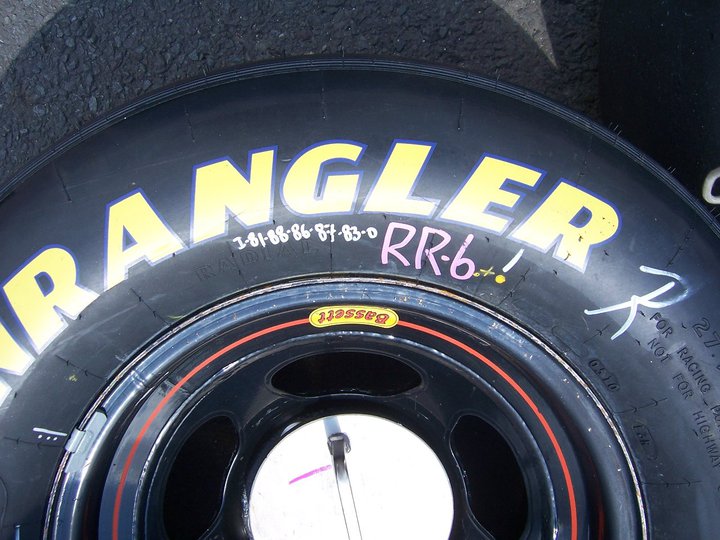 Crew chiefs will take all the data as well as input from the driver and tune the car throughout the race. Tires are one of the quickest and most effective areas to tune the car. Tire pressure can greatly affect the handling of the car. A harder tire or a tire with a high amount of air pressure will typically have less grip on the track surface, while the opposite is true for a tire with less air pressure. Sometimes a slight adjustment in tire pressure can give a driver the feel needed to drive straight to the front of the pack.
Crew chiefs will take all the data as well as input from the driver and tune the car throughout the race. Tires are one of the quickest and most effective areas to tune the car. Tire pressure can greatly affect the handling of the car. A harder tire or a tire with a high amount of air pressure will typically have less grip on the track surface, while the opposite is true for a tire with less air pressure. Sometimes a slight adjustment in tire pressure can give a driver the feel needed to drive straight to the front of the pack.
Tires fail no matter what brand they are. Most of the tire failures in NASCAR are due to punctures from debris on the track or sidewall cuts made during contact between two race cars. When a tire fails at high-speed, not matter what brand it is, the tire will often explode and cause significant damage to the car. Goodyear uses tires with inner liners at high-speed tracks and high-banked intermediate speedways such as Lowe's and Texas Motor Speedways and also at super speedways like Daytona.![]() The inner liner allows the driver to safely control their car in the event of a high-speed failure. The outer tire may shred apart and destroy the sheet metal around the fender, but drivers have much more control on an inner liner than a chewed-up steel rim.
The inner liner allows the driver to safely control their car in the event of a high-speed failure. The outer tire may shred apart and destroy the sheet metal around the fender, but drivers have much more control on an inner liner than a chewed-up steel rim.
The fastest car doesn't always win. Read the next section to learn why tires fail and how drivers can make all the difference during a NASCAR race. The finish line is just ahead.
Cite This!
Please copy/paste the following text to properly cite this HowStuffWorks.com article:
Josh Briggs "How NASCAR Tire Technology Works" 25 August 2008.
HowStuffWorks.com. <https://auto.howstuffworks.com/auto-racing/nascar/nascar-basics/nascar-tire.htm> 16 October 2022
Home>Sports>NASCAR>NASCAR Cars
PreviousNext
For the Daytona 500, NASCAR teams are allowed up to eight sets of tires for practice and qualifying and an additional seven sets (one set carries over from practice) for the race itself. In total, 15 sets of tires are allowed, or 60 individual tires. The number of tires used in the race will vary depending on the driver, team, track configuration, and race length, but between 20 and 28 tires are typically used for the Daytona 500 race. More aggressive drivers who take tighter or sharper turns, or lose control and spin out, will use more tires in a race.
In total, 15 sets of tires are allowed, or 60 individual tires. The number of tires used in the race will vary depending on the driver, team, track configuration, and race length, but between 20 and 28 tires are typically used for the Daytona 500 race. More aggressive drivers who take tighter or sharper turns, or lose control and spin out, will use more tires in a race.
Held at the beginning of each NASCAR season, the Daytona 500 is regarded as the most important race in the NASCAR Cup Series. Unlike other sports where the finale is the championship at the end of the season, the Daytona 500 kicks off the yearly series with a wave of excitement. The race lasts for 500 miles and is run at the Daytona International Speedway in Florida every year.
Before Goodyear became the exclusive tire supplier of NASCAR in 1997, two other manufacturers were also producing tires for the sport.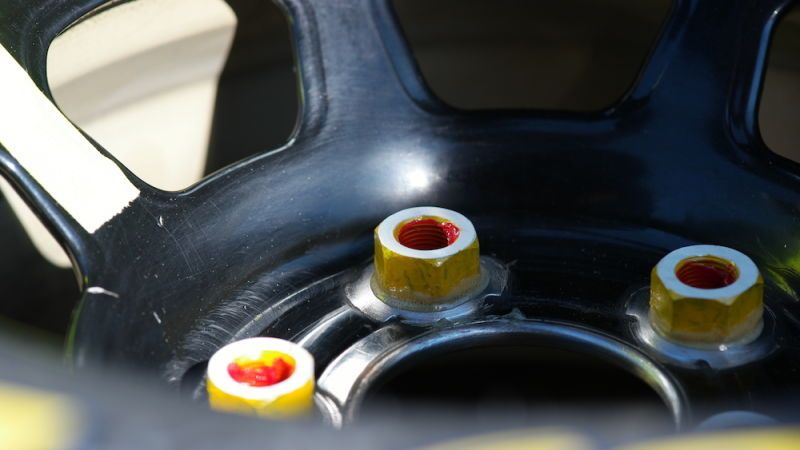 The Firestone Tire and Rubber Company and the McCreary Tire and Rubber Company were Goodyear’s primary competitors in the beginning. After Goodyear rose above its early competition, its toughest battle came against Hoosier. At one point, NASCAR believed Goodyear would be the victim of a hostile takeover (affecting NASCAR’s operations) and hired Hoosier as a backup for Goodyear. After drivers raised safety concerns about Hoosier tires, Goodyear was adopted as the sole tire supplier for NASCAR.
The Firestone Tire and Rubber Company and the McCreary Tire and Rubber Company were Goodyear’s primary competitors in the beginning. After Goodyear rose above its early competition, its toughest battle came against Hoosier. At one point, NASCAR believed Goodyear would be the victim of a hostile takeover (affecting NASCAR’s operations) and hired Hoosier as a backup for Goodyear. After drivers raised safety concerns about Hoosier tires, Goodyear was adopted as the sole tire supplier for NASCAR.
Prior to the 2017 NASCAR season, at the Daytona 500, teams were allowed to have up to nine sets of tires on the race day. Before the season started, NASCAR announced that it would limit the number of tire sets teams could have in some of their events, including the reduction to eight tire sets at the Daytona 500. This decrease means that crew chiefs have to manage their tires more strictly and call for fewer tire changes.
The tires used by NASCAR are designed to handle high racing speeds, and each tire can only last for about 100 miles of racing.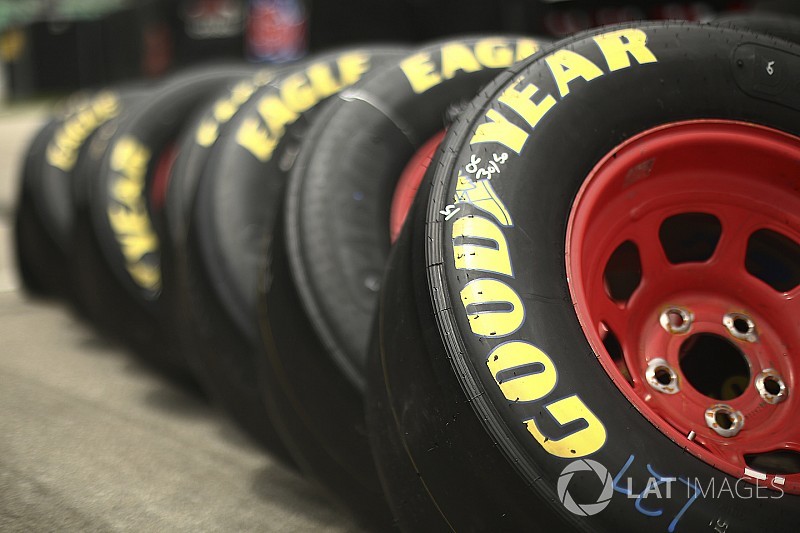 The tires are designed to have as much grip as possible, especially when the rubber heats up to increase the traction and control for the driver. Since the tires do not last for that long, and how many tires each team can have, the cost of the tires becomes very expensive. In 2015 for the NASCAR Cup Series, $35 million was spent on tires. Each tire costs around $500, and each team goes through $20,000 worth of tires for every race.
The tires are designed to have as much grip as possible, especially when the rubber heats up to increase the traction and control for the driver. Since the tires do not last for that long, and how many tires each team can have, the cost of the tires becomes very expensive. In 2015 for the NASCAR Cup Series, $35 million was spent on tires. Each tire costs around $500, and each team goes through $20,000 worth of tires for every race.
Goodyear is the current manufacturer of NASCAR tires and offers slicks for dry conditions and rain tires for wet weather racing.
All NASCAR tires are currently manufactured by Goodyear, which is based in the United States and produces for all types of vehicles. At the Daytona 500, NASCAR Cup Series cars run 18-inch Goodyear Eagle Superspeedway Radials. The minimum recommended inflation is 28 PSI in both left tires, 52 PSI in the right front, and 50 PSI in the right rear. The circumference of the left side tires is 89.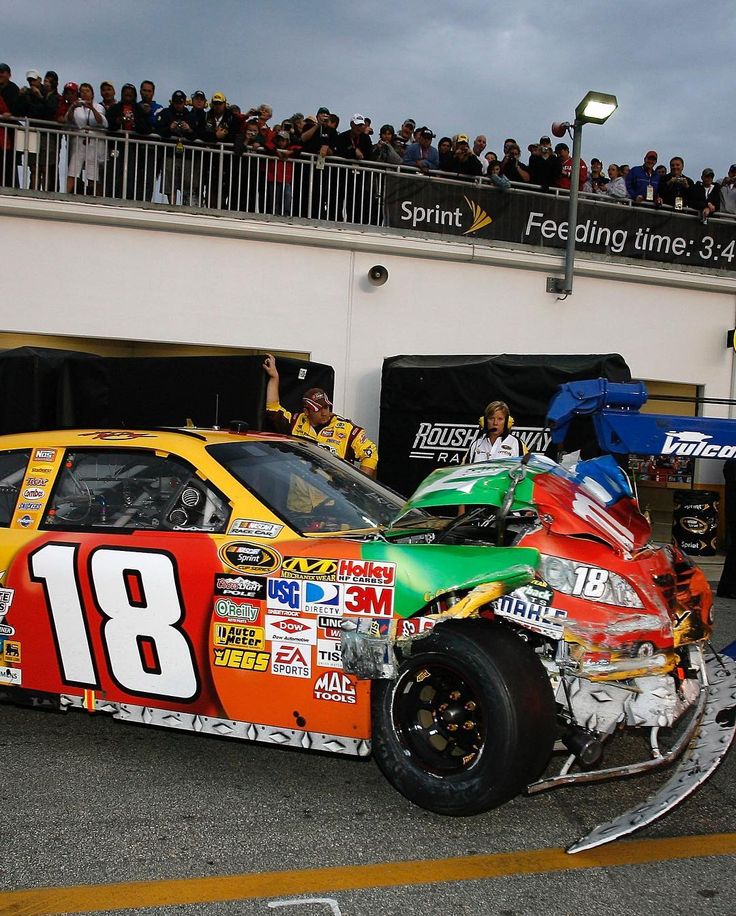 53 inches; the right sides are slightly larger at 89.76 inches around.
53 inches; the right sides are slightly larger at 89.76 inches around.
The number of sets of tires allowed in a NASCAR Cup Series race is different at each track. At the Daytona 500, teams are allowed to use eight sets of tires during the race. There is also a limit on the number of tires a team can use throughout the whole weekend. At the Daytona 500, teams are allowed to use 15 total sets the entire weekend; seven for practice and qualifying and eight during the race.
A single NASCAR Cup Series tire costs around $500, meaning that a set of four tires is $2,000. NASCAR Cup Series drivers go through up to 12 sets of tires per race, meaning that an entire race could cost a NASCAR team over $20,000 in tires.
A NASCAR Cup Series tire weighs 24 pounds. The aluminum alloy wheels used on the Generation 7 cars are extremely lightweight, at only three pounds apiece. The combined weight of rim and tire is 27 pounds per wheel.
The combined weight of rim and tire is 27 pounds per wheel.
PreviousNext
PreviousNext
Fri, 17.09.2010 - 06:00 / 0 Comments
NASCAR teams use between 9 and 14 sets of tires on a single weekend, so tire wear has to be monitored carefully.
Tires are of the utmost importance in any racing series, as they are the only thing responsible for maintaining contact between the track surface and the expensive cars.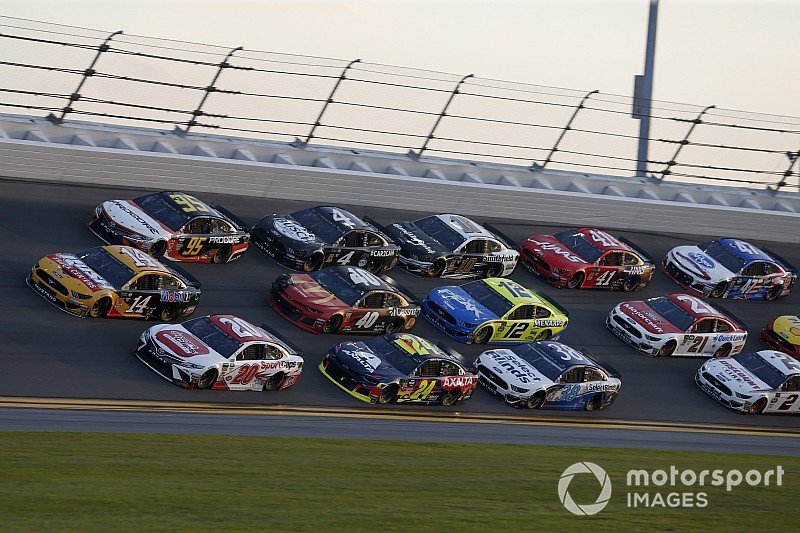 American NASCAR races, which are very popular with the United States, are also distinguished by the fact that tires have to deal with huge loads - during normal events (i.e. in one weekend), a NASCAR Sprint Cup series team uses nine to fourteen sets of tires, supplied by Goodyear, depending on the length and type of track - short track, speedway, super speedway or road racing. For comparison, let's say that a regular set of road tires can last three years.
American NASCAR races, which are very popular with the United States, are also distinguished by the fact that tires have to deal with huge loads - during normal events (i.e. in one weekend), a NASCAR Sprint Cup series team uses nine to fourteen sets of tires, supplied by Goodyear, depending on the length and type of track - short track, speedway, super speedway or road racing. For comparison, let's say that a regular set of road tires can last three years.
In addition, Goodyear tire specifications can also vary from race to race depending on the incline of the terrain type (asphalt, concrete or a combination of both), so during a season Goodyear uses 18 tires of varying performance.
Difference between Goodyear racing and road tires
| Racing Goodyear Eagle | Road Goodyear Eagle High-Performance | |
| Cost | $389 each | $150-200 each |
| Average mileage | 240 km | 80,000 km |
| Cold pressure level: | 30 psi (left), 45 psi (right) | 35 psi (both sides) |
| How to inflate | Dry air or nitrogen | Air |
| Weight | 11 kg | 13.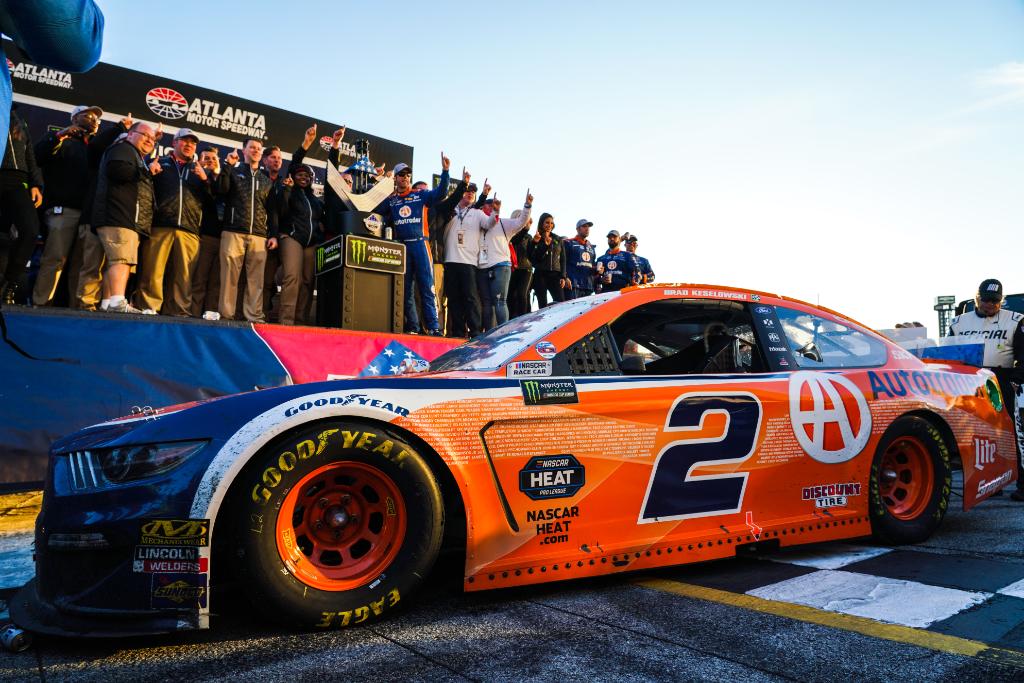 5 kg 5 kg |
| Tread thickness | 1/8" | 3/8" |
Thus, given the rate of tire wear, this factor becomes very important. Determining its degree can be very difficult, since it is influenced by numerous factors, such as: features of the production process, type of rubber compound (Hard or Soft), type of track surface, shock absorbers and suspension springs, tire pressure, temperature (track, tires and air), etc.
If a team achieves more even wear, their tires can travel a longer distance, which gives them an advantage over their rivals, and as a result, a special procedure has been developed to control tire wear, illustrated below:
Under the letters NG are written the allowable tread depth levels for this tire. In this case, the indicators change when moving from the inside of the tire to the outside, for which the letters I (Inside) and O (Outside) are located on both sides of the inscription.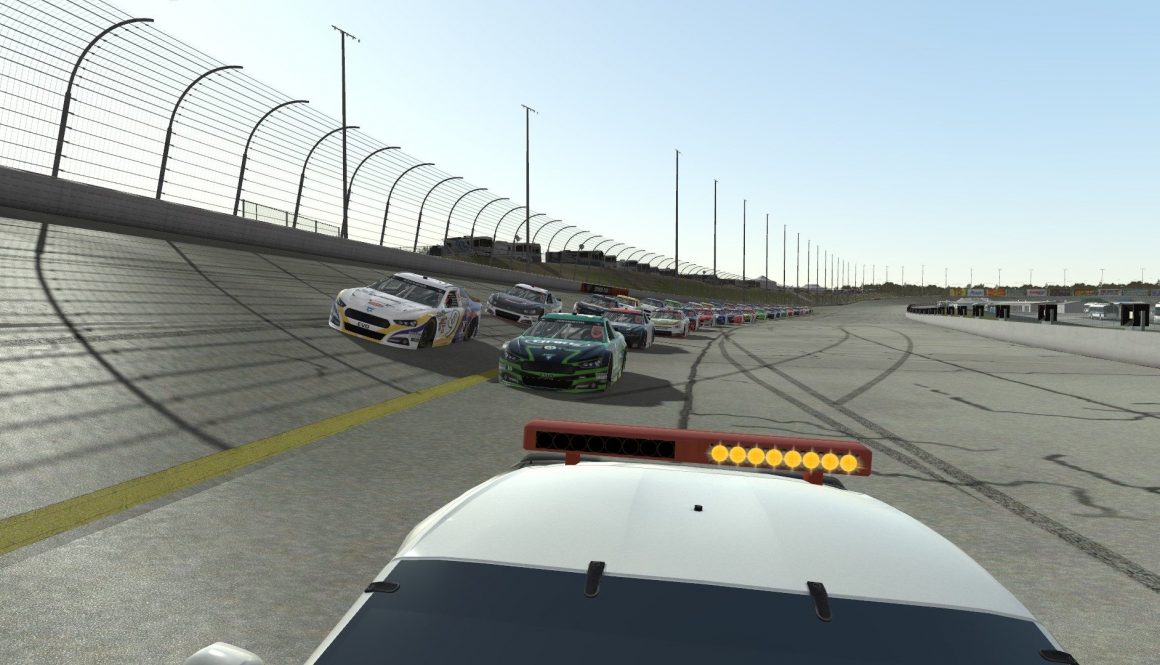 In addition, you can understand that this is a right rear tire, as indicated by the RR (Right Rear) marking, and the number 6 indicates that this is a tire from 6 sets.
In addition, you can understand that this is a right rear tire, as indicated by the RR (Right Rear) marking, and the number 6 indicates that this is a tire from 6 sets.
Temperature has a big effect on the rate of tire wear, so it's important that teams take numerous temperature measurements during practice to be able to predict how a tire will wear during the race itself. In the photo, Goodyear employees during practice wait for competitors to drive up to check their tires. When the cars start to stop, they also measure the temperature of the track from about 1 meter above the surface.
Once a tire has been used, it is very important to make accurate measurements of the remaining tread depth, for which the team member in the photo removes the layer of dirt that has accumulated on the heated surface of the tire with a blowtorch.
Well, this is what a tire would look like if the team members didn't take precise wear measurements.
The Winston Cup has a semi-official proverb that can be roughly translated as "if you don't hit it, you won't ride it". To understand its meaning, you do not need to closely follow the entire season, it is enough to see only a couple of races.
First, I would like to convince everyone that I am not a fan of NASCAR racing. No, of course, I love motorsport, but the most popular racing discipline in the States is not even close to my favorite "pokatushki". But, as it usually happens, life forces us, if not to change our minds, then to revise the already established ideas for sure. So a recent trip to Bristol, Tennessee, for one of the "NASCAR" races of the Winston Cup series, allowed me not only to have a great time, but also to speculate a lot after that performance, which is called the rather collaborative acronym NASCAR.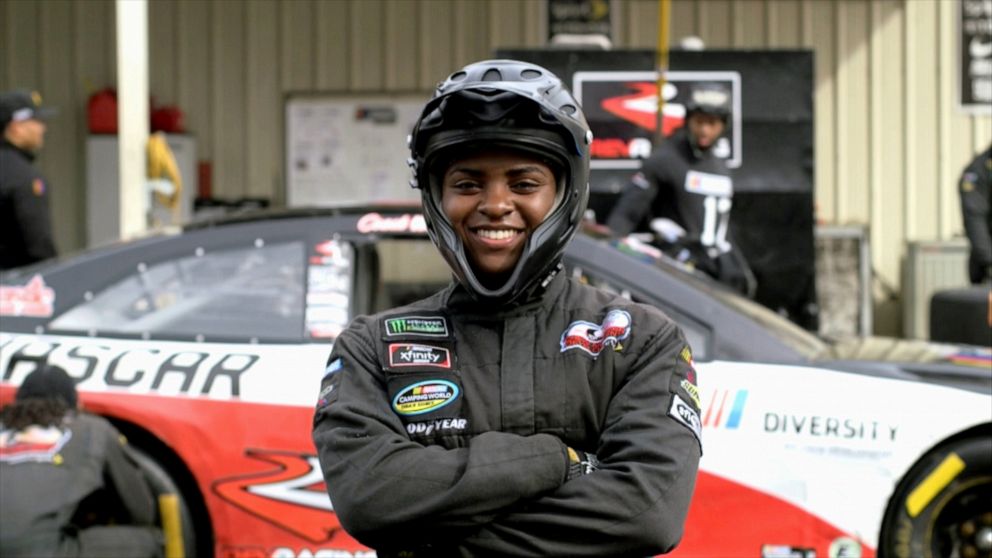
It was there, in Bristol, that I finally managed to capture the essence of this American circus. It turns out that in order to relax and have fun, you need to learn a fairly simple truth: you should enjoy what you have, and not regret what will never be here. What does it mean? Everything is simple. NASCAR will never have high technology, the complexity that comes with it, the latest developments from the cutting edge of racing engineering, and the like. But the tried and tested methods, the old school, the mat and the sledgehammer, and the old-fashioned tricks will never leave here. "Naskar" car is far from technological perfection - it can be seen both outside and inside. His motor does not throw the tachometer needle up to 19000 rpm, no pneumatic valves or expensive electronic brains. Instead, it can spin up to 8500 rpm, has conventional pushrods and a carburetor. The team in the pit lane doesn't use a $30,000 filling machine, but takes jerry cans and a pump that don't add up to $300. Do you understand what I'm talking about?
Do you understand what I'm talking about?
The lack of high technology in this racing series is a deliberate and completely incomprehensible measure for those who have ever encountered the world of European motor racing. Indeed, for the latter, the art of engineering and high speeds are inseparable. That is why Formula 1 is still breathtaking, and the World Rally Championship broadcasts simply blow the minds of the fans. What would these races mean without fireballs and cars, year by year making impressive breakthroughs in the field of aerodynamics, engine building, electronics ... But this is the main "joke" from the creators of NASCAR - without super technologies, they managed to establish a successful huge audience. Does the low level of technology automatically reduce the quality of the spectacle? Of course not! Does the lack of turbocharging or electronically controlled suspensions make racing more boring? Never! And what does all this say? Perhaps only that at least two roads always lead to success.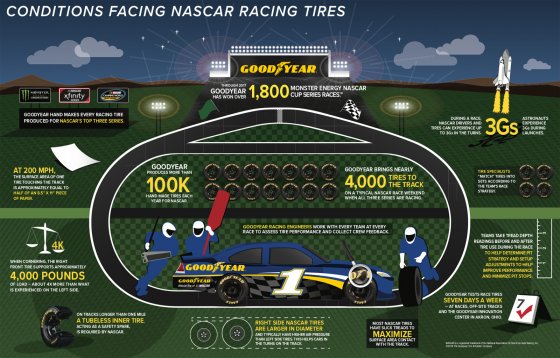
But we digress from our main topic - the Bristol Winston Cup race. If you ask me what it was like, I might compare it to a modern-day gladiator fight. Moreover, the "NASCAR" oval strongly resembles the ancient Roman Colosseum, and the spectacle that takes place on it can sometimes be called cruel. A feature of the Bristol track is its size - the half-mile track is considered the smallest in the racing calendar. 43 cars can legally take their positions on the starting grid, and when they start the race, there is not much room left in those eight hundred meters. All corners of the track are heavily profiled and allow riders to go through them at a crazy speed - the average is 192 km/h Impressive? Think about the length of the distance and you will understand why the brochure for this track says "The fastest 800 meters in the world."
The Winston Cup competition has a semi-official proverb that can be roughly translated as "if you don't hit it, you won't ride it". To understand its meaning, you do not need to closely follow the entire season, it is enough to see only a couple of races.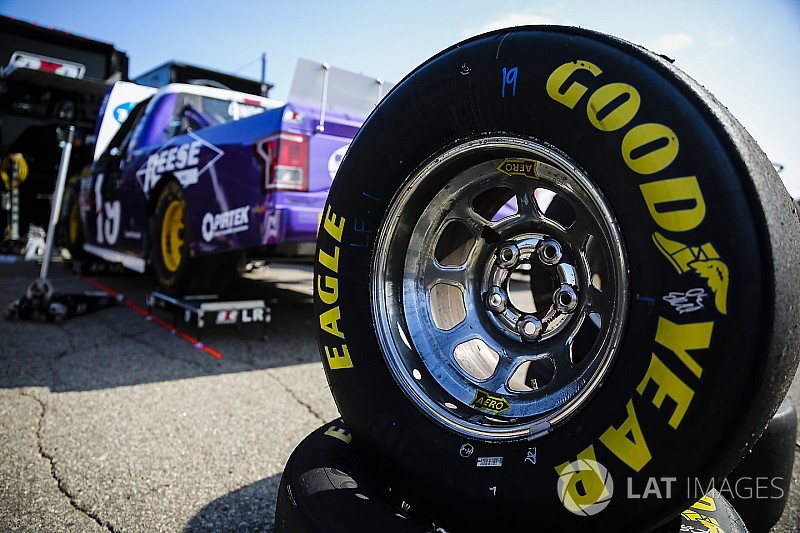 Personally, I was in deep shock after seeing how much contact fighting is on the NASCAR tracks. Perhaps only seven or eight of the more than forty cars that entered the start passed the finish line intact after 500 laps of the race. And I'm not talking about scratches, but about serious "scars"! But what is striking is that these cars can easily endure serious damage and remain competitive! After a serious accident that damaged the front of the car, the racer turns into the pits, where they remove the damaged pieces of metal from the “nose”, and he again leaves the track. That's what Dale Jerret did before my eyes, who rode almost the entire race without a single piece of skin on his front end! Europeans would call it madness, but here in America, scars only adorn cars.
Personally, I was in deep shock after seeing how much contact fighting is on the NASCAR tracks. Perhaps only seven or eight of the more than forty cars that entered the start passed the finish line intact after 500 laps of the race. And I'm not talking about scratches, but about serious "scars"! But what is striking is that these cars can easily endure serious damage and remain competitive! After a serious accident that damaged the front of the car, the racer turns into the pits, where they remove the damaged pieces of metal from the “nose”, and he again leaves the track. That's what Dale Jerret did before my eyes, who rode almost the entire race without a single piece of skin on his front end! Europeans would call it madness, but here in America, scars only adorn cars.
It is all the more difficult to describe the audience's interest from the point of view of logic - there seems to be no complex combination of turns, not a single chicane, "eski" or "bus stop". What's interesting? But the amount of energy thrown out by the audience is hard to describe.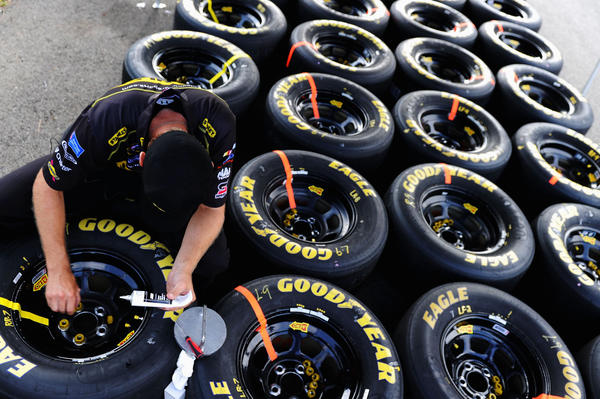 Bristol is different in this regard - 120,000 spectators create a very intimate atmosphere on a small track, in which all five senses are double loaded. The roar of V-shaped "eights", the variegation of red, yellow, silver cars rushing along the edge of the track, beyond which the boundless blue sky, the heat of the spring sun on the shoulders. The smell of burnt fuel and sports rubber, the taste of hot dogs and Budweiser - all this is here in unlimited quantities, and it is for these pleasures that American viewers come here.
Bristol is different in this regard - 120,000 spectators create a very intimate atmosphere on a small track, in which all five senses are double loaded. The roar of V-shaped "eights", the variegation of red, yellow, silver cars rushing along the edge of the track, beyond which the boundless blue sky, the heat of the spring sun on the shoulders. The smell of burnt fuel and sports rubber, the taste of hot dogs and Budweiser - all this is here in unlimited quantities, and it is for these pleasures that American viewers come here.
Another feature of these races is how close the fans can get to the action. For starters, of course, you can take tickets to the very top, from where you can see the entire track. But at the same time, anyone can get up from their seat and approach the fence itself - a low concrete wall with a conventional wire mesh on top - separating rushing cars and interested citizens. Can you imagine how breathtaking it is when you walk along the wall that separates you from the starting straight, while a dense pack of 43 cars rushes past with all its unbridled power? Even the wind they create will easily deflect you from a straight line. Even more exciting awaits you in Turn 2 - the sight of these big and hulking machines rushing on the verge of a melting rubber grip is not for the faint of heart, to say the least. But you should not be too close and in no case should you look at this enchanting spectacle - the probability is too high that a random accident will snatch one of these high-speed hippos from the crowd, spin in an uncontrollable dance and direct it to that part of the wall behind which you are. At least once I had to stretch out in a photogenic jump when a car, no longer steerable, headed straight for me and with its whole mass kissed the barrier that saved me. I crossed myself and swore, but I did not hear my own voice - the crowd around me went crazy for a minute.
Even more exciting awaits you in Turn 2 - the sight of these big and hulking machines rushing on the verge of a melting rubber grip is not for the faint of heart, to say the least. But you should not be too close and in no case should you look at this enchanting spectacle - the probability is too high that a random accident will snatch one of these high-speed hippos from the crowd, spin in an uncontrollable dance and direct it to that part of the wall behind which you are. At least once I had to stretch out in a photogenic jump when a car, no longer steerable, headed straight for me and with its whole mass kissed the barrier that saved me. I crossed myself and swore, but I did not hear my own voice - the crowd around me went crazy for a minute.
This closeness to the action and the lack of rehearsal of his plot moves sell tickets and attract spectators to the stands. For the other side, the racers, it's a harsh reality that puts their lives on the line every time they put on their helmets and climb inside the race cars. And despite the fact that the "NASCAR" cars are among the safest in the racing world, fatal accidents happen here. You don't have to look for examples for a long time - in Bristol, Kyle Petty "laid" his car against the wall. The veteran's wounds were not life-threatening, but the incident brought back memories of the horrific accident three years ago that killed his son, Adam Petty. Of course, the car saves the pilot in most racing collisions, but there are exceptions that are designed to remind everyone of the danger that motorsports carry. There is hardly a single NASCAR fan in the world who does not remember the 2001 Daytona - the race in which this sport lost its brightest star and true legend, Dale Earnhardt Sr. For most Americans, he had long outgrown the limits of motorsport and was practically invulnerable, but fate decreed otherwise. And the fact that the racing series managed to survive this tragedy and continue to move forward is a great proof that the desire to compete and win is always stronger than the fear that holds us back.
And despite the fact that the "NASCAR" cars are among the safest in the racing world, fatal accidents happen here. You don't have to look for examples for a long time - in Bristol, Kyle Petty "laid" his car against the wall. The veteran's wounds were not life-threatening, but the incident brought back memories of the horrific accident three years ago that killed his son, Adam Petty. Of course, the car saves the pilot in most racing collisions, but there are exceptions that are designed to remind everyone of the danger that motorsports carry. There is hardly a single NASCAR fan in the world who does not remember the 2001 Daytona - the race in which this sport lost its brightest star and true legend, Dale Earnhardt Sr. For most Americans, he had long outgrown the limits of motorsport and was practically invulnerable, but fate decreed otherwise. And the fact that the racing series managed to survive this tragedy and continue to move forward is a great proof that the desire to compete and win is always stronger than the fear that holds us back.
But human psychology is such that this element of danger largely makes NASCAR an extremely popular racing series among Americans. The most popular, to be exact. There are many reasons for this. Do not forget that everything that races on these very ovals is also available to an ordinary American. He can go to any of the dealers and buy a Ford Taurus, a Chevrolet Monte Carlo, a Pontiac Gran Prix, or a Dodge Stratus—they race cars that look a lot like these. NASCAR is unique in its origins, nowhere else in the world like it - the new European series V8 Star is out of work. Many Americans are proud of this, and the pilots for them are none other than the "good old guys." And this is in many ways similar to the truth - among the racers there are a lot of people without higher education, and there are no mannered aristocrats among them at all. Representatives of the middle class, who made their way into the people due to their skills - this is precisely why they are sweet to the same Americans as they are.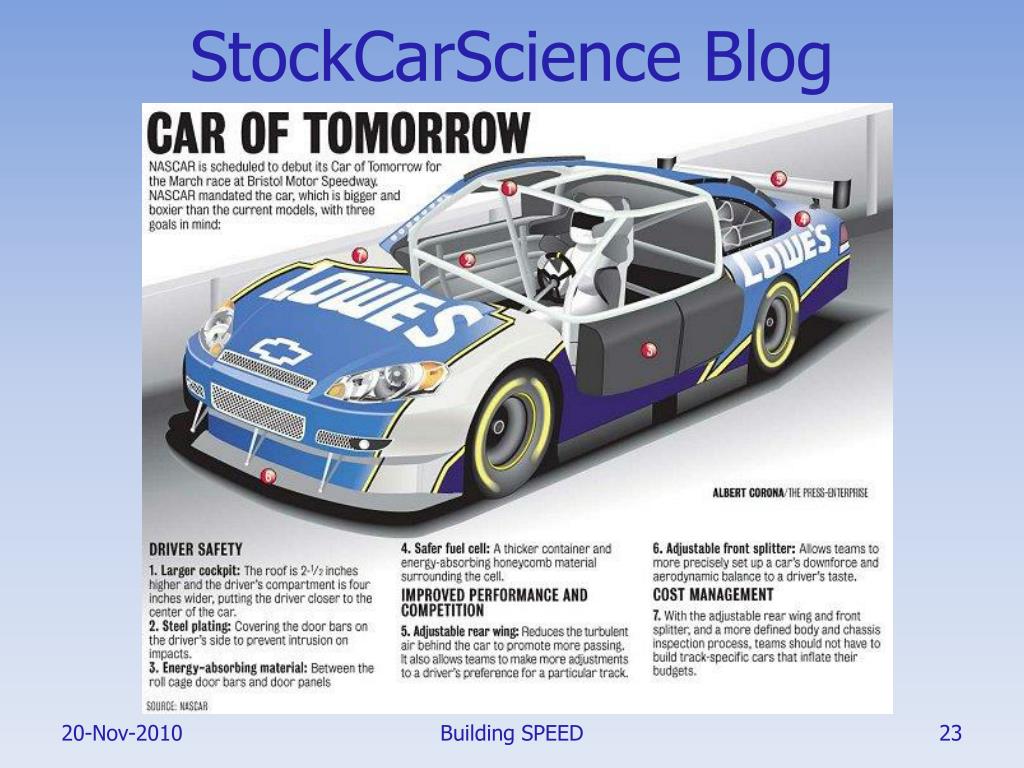 It would hardly have happened otherwise. Continuing the conversation about the fans, it is worth noting that after the death of the elder Earnhardt, his son, Earnhardt Jr. and Jeff Gordon, became the two most popular drivers in the series. I have never met a person who liked both of these pilots. And sometimes manifestations of respect for your pet reach frightening proportions. T-shirts, baseball caps, beer coolers, posters, seat cushions, stickers on cars with the numbers of the pilot's car. Couples, by the way, are required to wear the same T-shirts, which applies to all other family members.
It would hardly have happened otherwise. Continuing the conversation about the fans, it is worth noting that after the death of the elder Earnhardt, his son, Earnhardt Jr. and Jeff Gordon, became the two most popular drivers in the series. I have never met a person who liked both of these pilots. And sometimes manifestations of respect for your pet reach frightening proportions. T-shirts, baseball caps, beer coolers, posters, seat cushions, stickers on cars with the numbers of the pilot's car. Couples, by the way, are required to wear the same T-shirts, which applies to all other family members.
At the end of this long day, I left Bristol with a deep sense of respect for the creators of this emotional spectacle, in which human courage, mixed with an illogical lack of technology, comes out more than many other modern races. “If you don’t hit it, you won’t go” is all you need to know.
motorsport
Articles / Practice Stop on demand: what breaks in the brake master cylinder Everyone used to know what a master brake cylinder (or just a GTZ) is.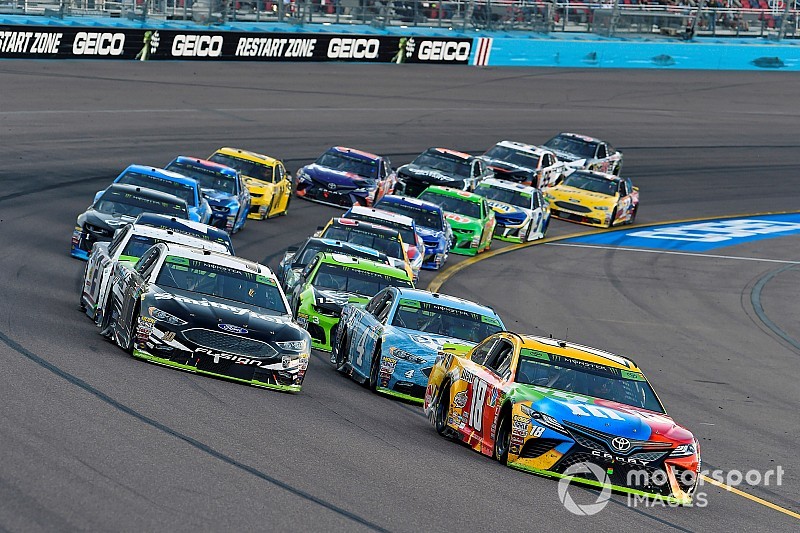 Now they remember him much less often: the GTZ has noticeably increased reliability, and on new machines it practically does not fail .... 39one 0 one 10/14/2022
Now they remember him much less often: the GTZ has noticeably increased reliability, and on new machines it practically does not fail .... 39one 0 one 10/14/2022
Articles / Travel Air sellers: how cunning businessmen make money in lines at the borders The past two weeks have been marked by huge queues of cars at the borders of Russia and neighboring countries. And where there are queues, difficulties and excitement, there are always those who want to catch... 59four 0 5 10/14/2022
Articles / Used cars Range Rover Evoque I with mileage: durable suspension, the right oil and no Ford engines We have already praised the Range Rover Evoque for its stainless body, scolded the unimportant multimedia and blamed the models for capricious electrics. It's time to figure out which motors to avoid... 1958 0 2 10/13/2022
It's time to figure out which motors to avoid... 1958 0 2 10/13/2022
Test drives / Test drive Haval Dargo vs Mitsubishi Outlander: the dog is barking, the stranger is coming In the Haval dealership in the south of Moscow, life is in full swing: buyers look at cars, communicate with managers and sign some papers. While I was waiting for the test Dargo, the same cross... 13486 7 175 13.09.2022
Test drives / Test drive Motor from Mercedes, emblem from Renault, assembly from Dacia: test drive of the European Logan 1.